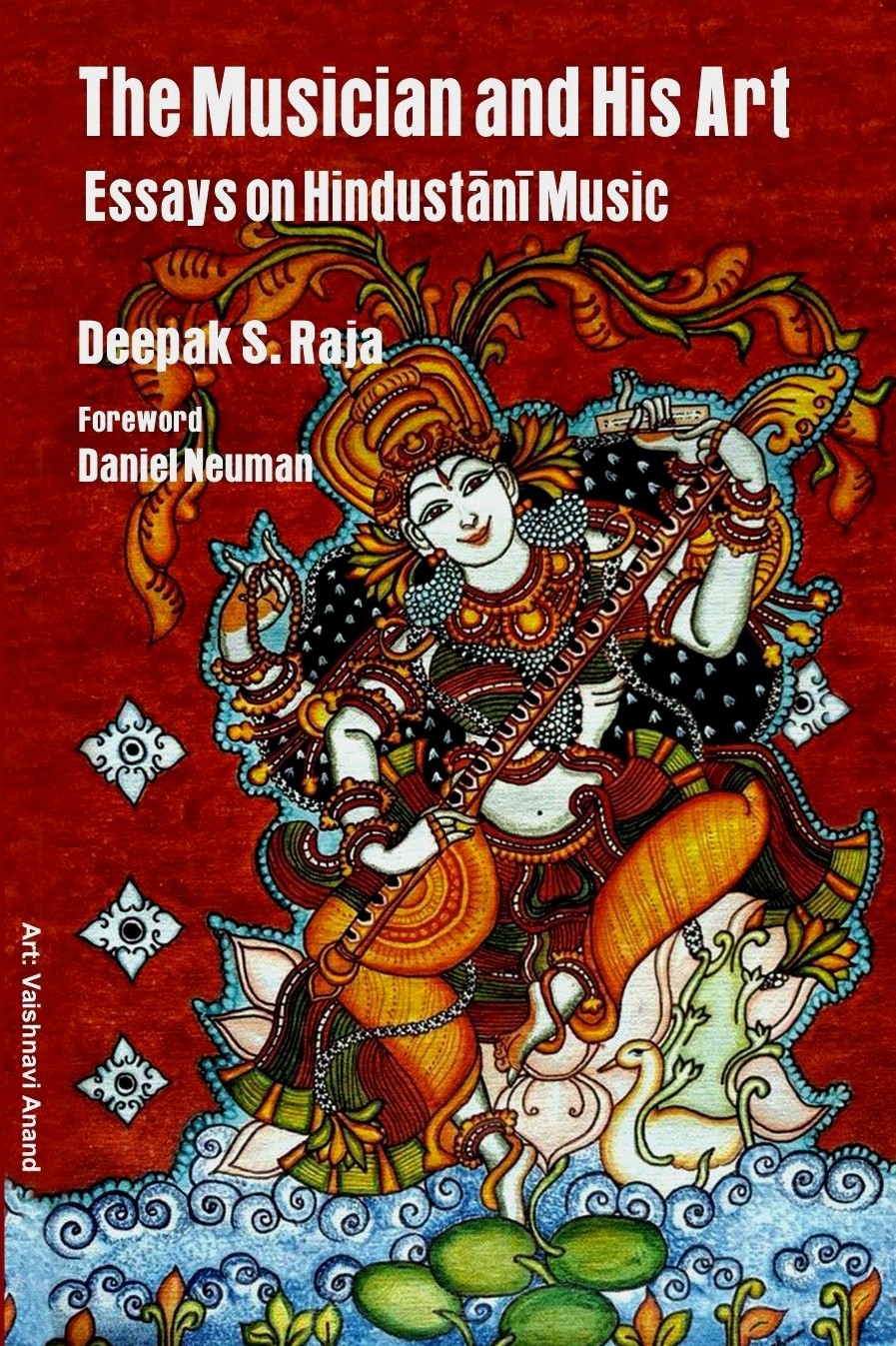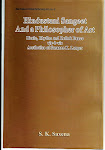Marwa, Puriya, and Sohini are three ragas born from the same scale (S-r-G-M^-D-N). The three are also amongst the most popular ragas in Hindustani music. So, evidently, most musicians believe they know how to handle these ragas. For the discerning listener, however, renditions of these ragas are often uncomfortable because their skeletal phraseologies alone are not sufficient to differentiate one from the other.
The true test of differentiation would be for a musician to perform them one after the other. In living memory, only Ustad Bade Gulam Ali Khan, and Ustad Vilayat Khan are reported to have performed this feat.
How, then, are these ragas differentiated from one another? Of course, each of them has a distinctive emotional content. But, communicating these distinctive moods relies on certain well-established rules of melodic grammar, and prescriptive devices for the treatment of the melody.
The three ragas are distinguished from each other by their phraseology, by the melodic region in which their respective centers of gravity are located, and by the relative importance of ascending and descending melodic thrusts in their rendition.
Notional scale bases
By definition, all ragas are performed to base-Sa, at whatever pitch the musician fixes it. In addition, Marwa, Puriya and Sohini, have notional scale-bases, defining their primary territory on the melodic canvas. The contemporary Marwa has a notional scale-base at the lower-octave Dh swara, thus making D-N-r-G-M^-D its notional scale. Similarly, Puriya's notional scale-base can be considered to be at the lower-octave Ni. Sohini, a resident of the higher frequencies, has its notional scale-base at the middle-octave Ga.
Haunting signatures
Each of these ragas has its unique haunting signature. Speaking of their respective identities, Vilayat Khan had once said that if you walk out of the auditorium where a Marwa has been performed well, and re-enter after ten minutes, the walls should be resounding with the phrase lower-octave N-D-D. Similarly, the lasting aural image of a well-delivered Puriya should be the phrase M^-M^-G in the middle octave. And, finally, the dominant residual impression of Sohini should be D-N-S'-r-S' on the border between the middle and higher octaves.
Treatment of melody
Broadly, Marwa emphasizes the robust treatment of the swara material, with a generous dose of geometric/symmetric improvisation. The Puriya treatment is subtle, and largely melodic. Sohini's character, because of its limited improvisational potential, is lyrical, replete with ornamentation and frills.
In Marwa, one expects to find melody dominated by descending melodic phrasing. In Sohini, it will be dominated by ascending melodic phrasing. In Puriya, ascending and descending phrases/ passages will be almost equally present.
Now, you might ask how this is possible, because you cannot play any raga by avoiding either ascending or descending phrases. True, you cannot. But, the proportions can vary, and the desired aural images can engineered by clever devices. Careful analysis of great renditions reveals that, when appropriate to the raga, musicians construct ascending passages out of overlapping descending phrases, and also descending passages out of a combination of overlapping ascending phrases.
Time for performance
By the time-theory governing music performance, all three ragas belong to the twilight zone. Marwa and Puriya are prescribed for performance around sunset, and while Sohini is considered appropriate around sunrise. (Bhatkhande 1944)
MARWA
The contemporary Marwa has changed substantially since its documentation by musicologist Bhatkhande in the 1940's. Bhatkhande describes Marwa as having its center of gravity in the r-G-M^-D region of the middle octave. Bhatkhande also states that Marwa is not as somber as Puriya but, instead, has a strident, aggressive demeanor.
Since then, the melodic focus of the raga has moved downwards into the lower-octave Dh to middle-octave Re region. As a result, Marwa has acquired a pathos, and lost a little bit of its stridency. The contemporary Marwa retains the (komal) Re and Dh as its dominant swaras, as traditionally accepted; but the middle-octave Dh has been replaced by the lower-octave Dh.
This transformation of Marwa is, substantially, the contribution of vocalist, Ustad Ameer Khan, probably the most influential male vocalist of recent times. Since the publication of his Marwa (EMI/HMV: STC:048:7327), an ascent-dominated interpretation of the raga, concentrated in the mid-octave region, has become a rarity.
Marwa risks confusion with Puriya in the lower tetrachord, and Sohini in the upper. The Marwa ascent towards the upper-Sa is encouraged to omit the Ni swara (G-M^-D-S'), thus permitting a suggestion of raga Hindol.
One of the ways in which Marwa evades the shadow of Puriya and Sohini is by discouraging the use of base-Sa in its phraseology, and prescribing it for use only as an isolated swara. This feature imparts to it a predominantly pentatonic character. In addition, the resultant scale (D-N-r-G-M^-D) creates an interesting tonal geometry, making the raga amenable to geometric/ symmetric, as well as kaleidoscopic types of improvisation.
If we break down the notional raga scale into three pairs of contiguous swaras (D-N/ r-G/ M^-D), the lowest pair (D-N) stands out as a virtually isolated pair, with a frequency ratio of 1:1.125. The other two pairs (r-G/ M^-D) have higher, and identical proportions (1:1.185), and thus constitute similar pairs.
This also explains the special status, and attraction, of the N-D pair as the melodic signature of the raga. It leaps out from the fabric of the music, because it is different, and has a wedge-like sharpness that the other two pairs don't. This wedge becomes poignant when rendered in the lower octave (the contemporary Marwa), and severe one octave higher (the traditional Marwa).
Skeletal phraseology:
S/ N. r N. D. D./ N. D. r/ G r/ M^ G r/ r G M^ D/ D M^ D/ M^ N D/ D M^ D S'/ N D r'/ N r' N D/ D M^ G r/ G r/ N. D. r/ S
PURIYA
The dominant swaras in Puriya are Ga and Ni (Marwa is re-Dh). According to some musicians, the (komal) re to be used in Puriya is a suppressed micro-swara of the normal flat Re swara. Vilayat Khan utilizes this suppressed micro-swara routinely by pulling the string from base-Sa.
Puriya makes a normal use of base-Sa (Marwa discourages, Sohini virtually ignores). In the ascent towards the upper-Sa, the raga encourages omission of Dh and Ni swaras, so that the Sohini illusion is avoided. In the descent, Dh and Ga are recommended for subliminal treatment, so that the Marwa shadow does not fall on Puriya.
Despite the lower tetrachord (middle octave) center of gravity, Bhatkhande (1944) considers it permissible for Puriya to descend deep into the lower octave down to Ga. Ustad Ameer Khan, whose Puriya (Navras: NRCC: 0092) too is some kind of landmark, used this feature generously. Vilayat Khan does not do so, and retains a strong middle-octave focus.
Skeletal phraseology:
G N. r S/ N. D. N./ N. r G r G/ M^ M^ G/ G M^ D G M^ G (or) M^ N G M^ G/ G M^ D M^ S'/ N r' N M^ M^ G/ M^ r G/ N. r S
SOHINI
Sohini attempts to utilize whatever remains of the melodic potential of this swara material, after Puriya and Marwa have exploited it. In reality, what remains is very little. The skeletal phraseology of the raga is also virtually its exhaustive melodic potential. Sohini is, thus, not very much more than a song.
The melodic span of the raga is also limited to its notional scale. Its presentation is discouraged from going either below the middle-octave Ga, or above the higher-octave Ga.
This is why Sohini is performed most commonly in the semi-classical or light genres of vocal music, whose esthetics are governed by the varied and subtle ornamentation of each poetic idea enshrined in a melodic phrase. This is also the reason why classical performers either present this raga with dazzling artistry, or feel encouraged to take liberties with its melodic frame.
The dominant swaras in Sohini are the higher-octave Sa and the middle-octave Ga. In the ascent, the (komal) re swara is generally omitted, and in the descent, it is treated subliminally. Unless deftly handled, the descent into the lower tetrachord can, therefore, provide a fleeting glimpse of Puriya.
Skeletal phraseology:
G M^ D G M^ G/ r S/ N. S G/ M^ D N S' r' S/ S' r' N S' D N/ N D G/ M^ G r S
In actual performance, the skeletal phraseologies of the three ragas do, exhibit some common or tangential phrases. This is the heart of the issue. These ragas are differentiated as much in the sculpting of their residual aural images as in what can be laid down as their grammar.
(c) India Archive Music Ltd. New York
The finest recordings of Marwa, Puriya and Sohini have been produced by India Archive Music Ltd. New York





No comments:
Post a Comment